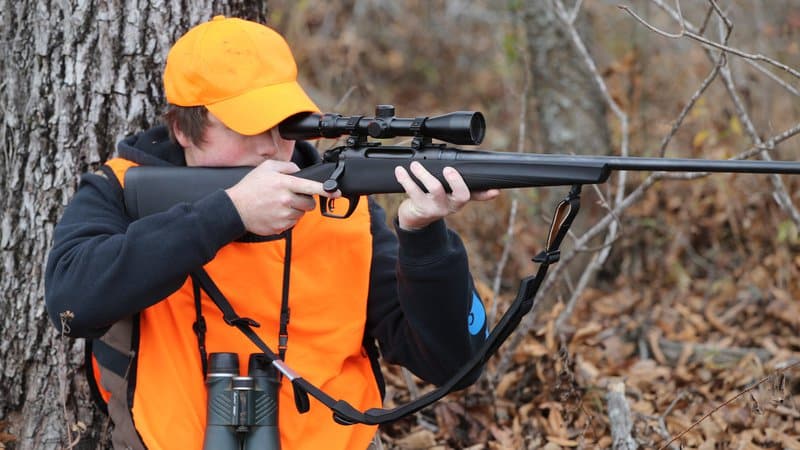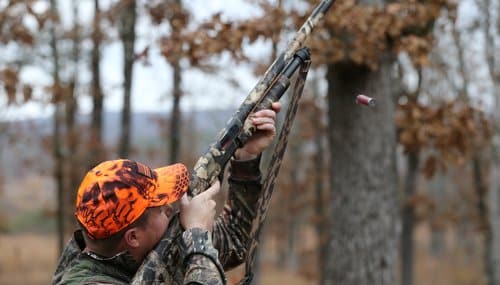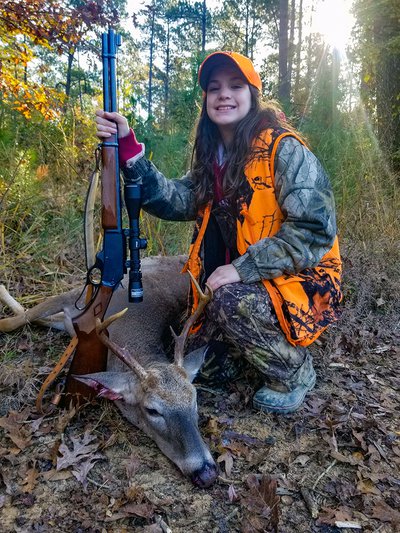Buyer’s guide for first-time hunting firearms
ON 11-30-2022

Nov. 30, 2022
Randy Zellers
Assistant Chief of Communications
LITTLE ROCK — Black Friday sale flyers have been circulating for weeks, and many sporting goods stores are dropping prices like a rock on rifles and shotguns people will be purchasing for youth hunters and adults who recently discovered how much fun hunting can be. But trying to muddle through all the calibers, gauges, actions and accessories can be a true endurance test to people who are not in the know about the latest and greatest firearms choices.

Grant Tomlin, Assistant Chief of Education for the Arkansas Game and Fish Commission who oversees shooting range development and shooting sports programs, says buyers should pay attention more at the fit and function of the gun than the price tag, however.
“There are some good deals to be had out there, but you really need to make sure the firearm fits the purpose, and fits the hunter.” Tomlin said. “If the firearm does not fit then it won’t be as accurate or enjoyable to use.”
Two main categories of firearms — rifles and shotguns — cover the vast majority of hunting needs. Each has its strengths and weaknesses which make it shine in certain situations. Shotguns excel at hitting moving targets, and are required for hunting small game birds such as doves and waterfowl. Rifles provide one projectile at longer ranges with more precision, making them perfect for deer hunting. Rimfire rifles also make excellent squirrel rifles at long ranges, but require a steady hand.
“A shotgun is going to have more room for error for first-timers shooting at squirrels as well, and you can get slugs to use for deer hunting with a shotgun, so it is more versatile, but you sacrifice distance and accuracy,” Tomlin said.
Tomlin suggests first-time hunters who are interested in duck hunting, turkey hunting and small game to start with a pump-action shotgun; 20-gauge for youths and 12-gauge for adults.
“You could drop down to a .410 bore shotgun for younger shooters, but 20-gauges are going to be more versatile and a wider range of ammunition is available,” Tomlin said. “And you can choose a lighter, low-recoil load that would be pretty comparable to a .410 to start them out with.”
Tomlin says the pump-action is an affordable, and extremely functional firearm for all sorts of conditions. Semi-automatics do soak up a little recoil from the gun, but have more moving parts that could fail in bad conditions and can be less safe in the hands of a new shooter.
If the person is going to hunt deer, a good rifle is an excellent option as well. Again, the choices are nearly limitless, which can be daunting to someone looking for their first gun.

“For a youth, I would stick to a solid, bolt-action rifle in either .243 or 7mm-08 (calibers),” Tomlin said. “It’s legal to go with a .223 in Arkansas, and it will work on deer with the right shot placement and proper bullet type, but I would suggest someone start with a caliber at least as large as .243 to give them a little more room for error. Or you could choose a lever action rifle in a .30-30 like what many of us started with decades ago. There’s still nothing wrong with that gun as long as you keep your shots within 200-yards or so, which is more than enough range for almost all first-time hunters.”
Again, Tomlin says the ruggedness, simplicity and added safety of the bolt-action and lever action make them a great option for first-time hunters. In the case of the bolt-action, he also says you can usually get much more quality for your money with the simpler design because manufacturers are able to focus more on shot performance than the inner-workings of the action.
“It’s just a solid design that lends itself to the precision needed for long-range shooting when manufactured well,” Tomlin said. “And the bolt usually can be cycled quickly enough to load a second round if needed.”
No matter if you are looking for a first-time shotgun or rifle, Tomlin says the most important thing is to make sure the firearms fits the user.
“We could go on and on about this brand or that brand, but the most expensive rifle won’t shoot well if it doesn’t fit the shooter,” Tomlin said. “It’s best to take the person you’re shopping for with you to let them hold and shoulder the guns before you decide on one.”
Another strong suggestion from Tomlin is to shop at stores that specialize in hunting firearms.
“The person behind the counter of a good gun store or sporting goods store is going to be able to help you out with the right sorts of equipment,” Tomlin said. “Once you’ve shot for a while and know what’s comfortable, you can look at some of the more general big box stores for deals. But the experience of men and women working at a reputable gun store is worth the extra few dollars it may cost sometimes. They’ll also be able to help set up a scope, aftermarket recoil pad and other accessories to make shooting more enjoyable.”
Recent News

Schoenrock chosen to lead AGFC
Apr. 21, 2025

AGFC Commissioner Meeting Notice
Apr. 21, 2025
Subscribe to Our Weekly Newsletter E-mails
Don’t miss another issue. Sign up now to receive the AGFC Wildlife Weekly Newsletter in your mailbox every Wednesday afternoon (Waterfowl Reports are published weekly during waterfowl season and periodically outside the season). Fishing Reports arrive on Thursdays. Fill in the following fields and hit submit. Thanks, and welcome!
